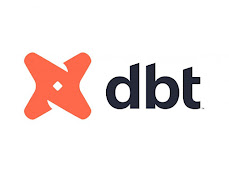Understanding the folder structure of dbt (data build tool) is crucial for effectively managing and organizing your data analytics projects. In this guide, we'll explore the various components of the dbt folder structure, including the target directory, and discuss best practices for structuring your dbt projects for scalability and maintainability.
1. Root Directory: The root directory serves as the foundation of your dbt project. It contains essential configuration files and serves as the starting point for navigating your project.
2. Models Directory:
The models directory houses your SQL model files, defining the transformations applied to your data. Models are organized into subdirectories based on logical groupings or domains, facilitating easy navigation and management of your project.
3. Tests Directory:
Quality assurance is paramount in data analytics projects. The tests directory contains YAML files defining schema tests, data tests, and custom tests to ensure the accuracy and integrity of your data transformations.
4. Data Directory:
Additional data files or resources used in your dbt project are stored in the data directory. This may include CSV files, Excel spreadsheets, or JSON files containing reference data for your transformations.
5. Macros Directory:
Reusable code snippets or SQL functions, known as macros, are stored in the macros directory. Macros enhance maintainability by allowing shared logic across multiple models.
6. Analysis Directory:
The analysis directory houses SQL queries or analyses providing insights into your data. These queries are separate from transformation logic and are useful for exploratory analysis and reporting.
7. Snapshots Directory:
Snapshots capture the state of your data at specific points in time. The snapshots directory contains YAML files defining snapshot configurations and logic for managing snapshots of your data models.
8. Docs Directory:
Documentation is essential for understanding and maintaining your dbt project. The docs directory contains Markdown files serving as documentation for models, tests, and other project components.
9. Target Directory:
The target directory is where dbt stores compiled artifacts and metadata generated during the execution of your project. This includes compiled SQL files, manifests, and lineage information.
my_dbt_project/
│
├── dbt_project.yml
│
├── models/
│ ├── users/
│ │ ├── user_model.sql
│ │ └── user_tests.yml
│ │
│ ├── orders/
│ │ ├── order_model.sql
│ │ └── order_tests.yml
│ │
│ └── products/
│ ├── product_model.sql
│ └── product_tests.yml
│
├── tests/
│ ├── schema_tests.yml
│ └── data_tests.yml
│
├── data/
│ ├── user_data.csv
│ └── product_data.csv
│
├── macros/
│ ├── date_utils.sql
│ └── aggregation_functions.sql
│
├── analysis/
│ └── user_analysis.sql
│
├── snapshots/
│ └── user_snapshot.yml
│
├── docs/
│ ├── models/
│ │ ├── users.md
│ │ ├── orders.md
│ │ └── products.md
│ └── index.md
│
└── target/
├── compiled/
│ ├── users/
│ │ └── user_model.sql
│ ├── orders/
│ │ └── order_model.sql
│ └── products/
│ └── product_model.sql
│
├── manifest.json
└── lineage.json
- dbt_project.yml: Configuration file for the dbt project.
Conclusion: By adhering to best practices and leveraging the structure provided by dbt, you can efficiently manage and scale your data analytics projects. Understanding the folder structure ensures clarity, organization, and maintainability, enabling collaboration and innovation in your data workflows. Whether you're building a small-scale project or a large enterprise deployment, mastering the dbt folder structure is essential for success in modern data analytics.

Comments
Post a Comment
Your Comments are more valuable to improve. Please go ahead